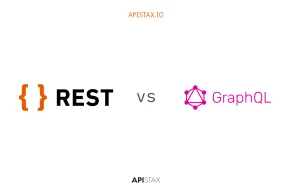REST vs. GraphQL: Choosing the right API architecture
In the world of web development, choosing the right API architecture is critical to building efficient and scalable applications. Two popular options that developers often consider are REST and GraphQL.
While both REST and GraphQL serve the purpose of enabling client-server communication, they have distinct differences in terms of design principles, flexibility, and performance.
REST (Representational State Transfer)
REST has been the go-to API architecture for many years and is widely adopted by developers around the world. REST uses simple HTTP methods such as GET, POST, PUT, and DELETE to perform operations on resources. It follows a stateless, server-driven design principle, where the server provides a predefined set of endpoints for clients to interact with.
Advantages of REST
1. Simplicity
REST is simple and intuitive, making it easy to understand and implement. It also simplifies testing and documentation, resulting in faster implementation.
2. Caching
REST has excellent support for caching, which significantly improves application performance by reducing server load and response times.
3. Scalability
REST APIs can easily scale horizontally because they are stateless and don't maintain client context. This makes REST a reliable choice for high-traffic applications.
Disadvantages of REST
1. Over-fetching or under-fetching
REST APIs often suffer from over-fetching or under-fetching of data, resulting in wasted bandwidth or multiple round trips to the server. This can affect performance and efficiency.
2. Versioning
Managing changes and introducing new features to REST APIs can be challenging and, if not handled correctly, can break clients that rely on specific endpoints.
GraphQL
GraphQL, developed by Facebook, is a query language for APIs that addresses some of the limitations of REST. It allows clients to request specific data from the server and receive only that data in a single round-trip. In addition, GraphQL provides a typed schema and introspection capabilities, allowing clients to understand and explore the capabilities of the API.
Advantages of GraphQL
1. Efficiency
GraphQL eliminates over- and under-fetching issues by enabling precise data requests. This minimizes response sizes, reducing network traffic and improving overall performance.
2. Flexible Data Retrieval
With GraphQL, clients can request data from multiple resources in a single query, minimizing additional round-trips to the server. This flexibility increases the efficiency of data retrieval.
3. Versioning and Backward Compatibility
GraphQL handles versioning and backward compatibility seamlessly. Changes to the API schema can be introduced without breaking existing clients, ensuring a smooth upgrade process.
Disadvantages of GraphQL
1. Learning curve
GraphQL has a steeper learning curve than REST due to its advanced concepts and syntax. However, once mastered, it provides powerful query capabilities and increased development efficiency.
2. Caching challenges
The flexible nature of GraphQL can pose caching challenges. Caching at the server level becomes more complex because each query can be unique, requiring additional effort for efficient caching strategies.
Choosing the right API architecture
When deciding between REST and GraphQL, it's important to consider your application's requirements and the tradeoffs of each architecture.
If simplicity and broad compatibility across systems are top priorities, REST is an excellent choice. REST's proven design principles, ease of implementation, and robust caching capabilities ensure reliable and efficient development.
On the other hand, if you anticipate complex data retrieval scenarios, frequent changes to the API structure, or prioritize efficient data transfer, GraphQL may be a better option. GraphQL's flexibility, precise data requests, and seamless versioning capabilities improve development efficiency and user experience.
Ultimately, the choice between REST and GraphQL depends on your specific application requirements and project scope. Consider factors such as data retrieval requirements, performance goals, scalability, and the skills of your development team. With careful consideration, you can make an informed decision that will ensure a successful implementation.
In conclusion, both REST and GraphQL have their advantages and disadvantages. Understanding their differences and evaluating their suitability based on your application's requirements will enable you to choose the ideal API architecture and build a successful application.
Our decision for APIstax
At APIstax, our decision to adopt REST as our API architecture was driven not only by development considerations, but also by the significant benefits it provides to our customers. REST's simplicity translates into user-friendly APIs that are easy for our customers to understand and interact with. This means faster integration into their projects and reduced learning curves. In addition, REST's compatibility with a wide range of systems ensures that our customers have the flexibility to work with the technologies they are most comfortable with, resulting in seamless integration and reduced friction in their development processes.
In addition, REST's caching capabilities result in improved performance and reduced latency for our customers. Faster response times translate into a better user experience for their applications and services. Finally, REST's stability and proven design principles mean that our customers can rely on the longevity and consistency of our APIs, reducing the risk of disruption to their services.
In summary, by choosing REST as our API architecture at APIstax, we prioritize our customers' needs by providing APIs that are easy to use, compatible with their existing systems, and optimized for performance and reliability, ultimately helping them achieve their development goals more efficiently and effectively.
